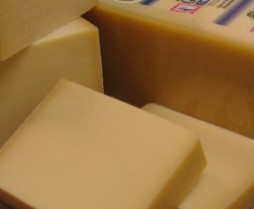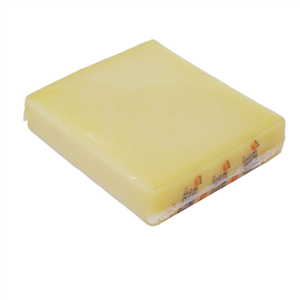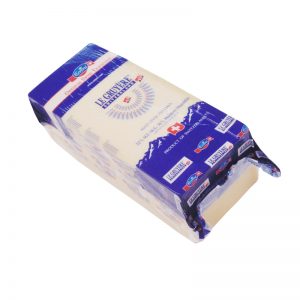
Country of Origin: Switzerland
Milk-type: Unpasteurized Cow’s Milk
Gruyère is a firm-to-hard Swiss Alpine cheese with a pale, golden-yellow flesh and a thick, rather dry brown-to-rust coloured crust. Although the cheese is texturally dense and unyielding, the mouthfeel is smooth, buttery and at times rather creamy. Like most cheeses hailing from the Swiss Alps: Gruyère has an upfront nutty sweetness, which is balanced by a full-bodied, savoury-sharp aspect and pleasantly salty taste.
Like other unpasteurized cheeses: Gruyère can be quite robust, but unlike its Cave-Aged counterpart—the naturally earthy flavour is subtler, more refined and less assertive. As such, Gruyère is very much a “crowd-pleaser” cheese—complex and flavourful enough to appeal to connoiseurs, but easy-going and mellow so as not to offend more tentative palates.
Perhaps rivalled only by the Emmental cheese popularly referred to as “swiss” cheese—Gruyère is certainly amongst the most iconic cheeses produced in Switzerland, and, of those known on an international level, the most representative of the treasured traditions of cheese making which emerged from the cantons of the Swiss Alps. For this reason the name ‘Gruyère’ has, in recent years, become rather fiercely protected. The region surrounding the town of Gruyères has, as far back as the early Middle Ages, been well known for their expertise in the affinage (the artisanal process of maturing cheese) of firm, full-fat cheeses and only certain cheeses, made within a particular locale and in accordance with certain standards of traditional manufacture can legally bear the name.
Aside from being a popular table cheese, and pairing well with a variety of charcuterie and crudités: the delicious flavour and agreeable melting qualities of Gruyère have made it a popular choice for cooking and baking, Many famous Swiss and French dishes—including fondue, croque-monsieur, cordon bleu and, of course, french onion soup—traditionally call for this cheese.
Beverage Pairings: Gruyère is traditionally served alongside pear or apple ciders (alcoholic or not), or Bock lager. Suitable wine pairings include Pinot Noir, Beaujolais, and Chardonnay. When cooked and melted, Gruyère is often enjoyed alongside black tea or dark coffees—both of which help to emphasize the complex nutty-sweetness of the cheese, and are especially recommended to follow a meal of fondue.
Sizes are approximate – {WEIGHT_POLICY}
- Display 15 Products per page



